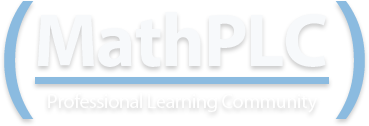Submitted by Patricia Croskrey on
In the book, Adding It Up: Helping Children Learn Mathematics, (National Research Council, 2001) (beginning in chapter 4, page 137) researchers talk about the components or strands of mathematical proficiency. They identify these strands as:
- conceptual understanding—comprehension of mathematical concepts, operations, and relations
- procedural fluency—skill in carrying out procedures flexibly, accurately, efficiently, and appropriately
- strategic competence—ability to formulate, represent, and solve mathematical problems
- adaptive reasoning—capacity for logical thought, reflection, explanation, and justification
- productive disposition—habitual inclination to see mathematics as sensible, useful, and worthwhile, coupled with a belief in diligence and one’s own efficacy.
The researchers go on to emphasize that these strands are not independent, but are interdependent with no one strand being more important than the other. They consider these strands to be the framework for increasing mathematical competency. These competencies incorporate the knowledge, skills, abilities, and beliefs that constitute mathematical proficiency for students in pre-kindergarten through 8th grade .
Let's put these strands of proficiency in terms we understand and use in our everyday teaching worlds. We will refer to them as: (1) conceptual understanding: (2) computational fluency; (3) problem solving; (4) reasoning and proof; and (5) teaching and learning math in context (that sensible and useful part of math). I thought that in the next 5 blog posts we could explore these strands (and what research says about them), what they mean to us, and how we orchestrate them into our curriculum, lessons, and classrooms.
We will often refer to this book, Adding It Up. It is sponsored by the National Research Council and is available by download for FREE. It is written in pretty easy to understand language and will give you much more detail and research about teaching children mathematics. Helping Children Learn Mathematics is also available by download for FREE.
Another book that I highly recommend and will also refer to often is, Elementary and Middle School Mathematics: Teaching Developmentally, by John Van de Walle. If you can’t afford the newest edition, any edition will work and will be a valuable addition to your professional resource library. In fact, I would go so far as to say that if you only own one resource book, it should be Van de Walle’s Elementary and Middle School Mathematics. It provides the research and pretty much everything you need to incorporate the 5 strands of mathematics proficiency into your classroom.
